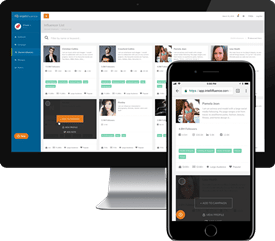These days, brands have more ways than ever to connect with consumers. While social media influencers have dominated much of the conversation, another type of digital voice has emerged as a force multiplier for credibility and conversion: Key Opinion Leaders (KOLs). Understanding the difference between a KOL and an influencer can help brands design more targeted, trustworthy, and effective marketing strategies.
What Is a KOL?
A Key Opinion Leader (KOL) is an individual who possesses specialized expertise and authority in a particular field or industry. Unlike general influencers—who primarily build audiences through lifestyle content, entertainment, or personal branding—KOLs are valued for their professional knowledge, credentials, and the trust they command among peers and followers.
The KOL definition varies slightly depending on industry context, but the core idea remains consistent: KOLs are experts who have the power to shape opinions, inform purchasing decisions, and influence professional or consumer behavior through their recognized expertise. They often come from fields such as medicine, technology, finance, fashion, academia, or science—where credibility and trust are earned over time through experience, not just social popularity.
For example:
- A well-known dermatologist reviewing a skincare product.
- A respected tech analyst discussing the advantages of a new gadget.
- A fitness coach or nutritionist endorsing a supplement.
In each case, the KOL’s opinion carries significant weight because it is rooted in expertise rather than pure popularity.
KOL vs Influencer: What’s the Difference?
While both KOLs and influencers have the power to sway audience behavior, they do so through different means and motivations. The KOL vs influencer distinction often centers on credibility, audience type, and content intent.
KOLs, or Key Opinion Leaders, earn their influence through expertise and authority. They typically have niche audiences that respect their professional knowledge—whether in medicine, technology, finance, or fashion. Their content tends to be educational, data-driven, and focused on sharing insights grounded in real-world experience. The trust they build stems from their credentials and proven track records, rather than personality alone. KOLs often maintain visibility beyond social media, participating in conferences, publishing research, or contributing to media outlets where their opinions help shape industry standards.

Featured Influencer: Eléonore Ramalli
J’aime partager mes découvertes décoration, j’aime beaucoup prendre en photos la vie dans la nature, j’essaie de partager un peu de tout, je n’ai aucune catégorie qui qualifierai mon compte Instagram, je partage de la beauté, de la mode, voyage ( quand je pars), décoration, animaux, séries, films, restaurants parfois, j’ai des chevaux !, j’essaie d’être polyvalente, partager mes envies et surtout j’aime découvrir de nouvelles choses, des nouvelles marques, de nouvelles expériences, opportunités.
Influencers, on the other hand, derive their impact from relatability and reach. They cultivate broad, lifestyle-oriented audiences by sharing personal experiences and authentic content that resonates emotionally. Their power lies in connection—the ability to engage followers through storytelling, creativity, and consistency across platforms like Instagram, TikTok, and YouTube. Trust in influencers is built through perceived authenticity and ongoing engagement rather than formal expertise.
In essence, KOLs build authority, while influencers build awareness. Both play valuable roles in the modern marketing ecosystem: KOLs lend credibility and trust, while influencers drive engagement and visibility. When used together strategically, they form a powerful balance of expertise and emotional connection that amplifies brand impact.
The Role in Digital Marketing
The rise of KOL marketing has been especially prominent in industries where trust and expertise matter most. In sectors like healthcare, finance, or B2B technology, customers rely on verified knowledge rather than peer recommendations. KOLs bring that credibility.
1. Establishing Brand Credibility
A brand’s association with a KOL automatically lends it an air of legitimacy. When a respected expert endorses a product or service, it signals quality and reliability. For instance, a pharmaceutical company partnering with a leading cardiologist to discuss heart health lends far more credibility than a lifestyle influencer posting about the same topic.
2. Educating Consumers
KOLs often act as educators, breaking down complex products or ideas into digestible insights. In the tech world, for example, a software engineer reviewing a new AI platform can explain its practical benefits in a way that resonates with industry professionals. This educational angle not only helps potential customers understand the product but also accelerates trust-based decision-making.
3. Driving Conversions and Sales
While influencers excel at creating brand awareness, KOLs are more likely to drive conversions within targeted niches. Their followers often include professionals, decision-makers, or serious buyers seeking reliable information before making a purchase. For example, a medical KOL’s product endorsement can directly influence which treatment physicians recommend or which device hospitals purchase.
4. Enhancing Brand Positioning
KOL collaborations also help brands position themselves as thought leaders within their industries. By aligning with credible experts, brands demonstrate their commitment to quality, innovation, and professional integrity—values that resonate with discerning audiences.
Why Brands Should Consider Investing in KOLs
As digital audiences become more discerning, consumers are placing a premium on authenticity and expertise. The rapid spread of misinformation online has made audiences more skeptical of promotional claims, especially in complex or technical industries. This shift has fueled a growing demand for voices that can provide not just opinions, but informed perspectives backed by evidence and experience. KOLs fill that gap perfectly. Their credibility bridges the divide between brand messaging and consumer trust, allowing them to communicate nuanced information in ways that resonate with audiences seeking substance over hype. For brands navigating crowded markets or promoting sophisticated products, KOLs represent a crucial differentiator—helping transform brand narratives into credible, trusted recommendations.
There are several compelling reasons why brands should consider investing in KOL collaborations as part of their marketing mix.
1. Higher Trust and Credibility
In an age where consumers are skeptical of sponsored content, KOLs provide a layer of authenticity that’s difficult to replicate. Their recommendations feel less like marketing and more like professional advice, making audiences more likely to take action.
2. Precision Targeting
KOLs typically have smaller but more specialized audiences than general influencers. This means brands can reach highly qualified prospects—such as medical professionals, engineers, or financial advisors—rather than broad, unfiltered demographics.
3. Long-Term Relationship Building
Because KOL collaborations are rooted in expertise and alignment, they tend to yield longer-term partnerships. These ongoing relationships help maintain consistent messaging and deepen brand credibility over time.
4. Influence on Industry Trends
KOLs often shape professional conversations and set industry standards. When brands align with these leaders, they indirectly influence the broader discourse around their products or technologies.
5. Improved Conversion Rates
Studies consistently show that expert recommendations convert better than peer endorsements—especially for higher-cost, higher-risk, or specialized products. The authority of a KOL can directly translate into more informed and confident purchases.
How to Combine Strategies to Win Big
While KOL vs influencer comparisons highlight their differences, the most successful marketing strategies often integrate both. Influencers can help generate mass awareness and emotional engagement, while KOLs reinforce trust and factual credibility.
For instance, a tech brand launching a new smart device could:
- Work with influencers to generate initial buzz on TikTok and Instagram.
- Partner with KOLs (like engineers or tech analysts) to provide in-depth reviews and technical validation.
- Use both types of content across digital channels to reach different segments of the customer journey.
- This combined strategy ensures the brand captures attention and earns trust—two pillars of successful digital marketing.
If you are ready to explore KOL partnerships, Intellifluence provides the ideal platform to connect with both expert voices and social media creators. As the largest warm influencer marketing networks, Intellifluence helps brands easily identify, vet, and collaborate with creators who align with their goals—whether they’re niche KOLs in specialized industries or lifestyle influencers with large audiences.
Intellifluence offers intuitive campaign tools so brands can build targeted campaigns, manage collaborations, and track performance, all from one streamlined dashboard. This makes it simple to engage KOLs for expert product reviews, educational content, or thought leadership campaigns, while simultaneously running influencer collaborations that boost visibility and engagement. Because the network includes professionals from diverse fields—ranging from healthcare to technology, beauty to finance—brands can tailor campaigns to reach precisely the audiences that matter most. Whether you’re looking to validate your product through credible expertise or amplify your brand story across social media, Intellifluence helps you do both efficiently and authentically.
With the right mix of influencers and KOLs, brands can create marketing strategies that balance trust, reach, and impact—driving measurable results in today’s crowded digital landscape.

SallyBot is committed to helping users get the most out of Intellifluence. By helping brands create campaigns, providing unparalleled customer service and offering useful advice, nothing makes SallyBot happier than hearing she is liked… Really, really liked.






